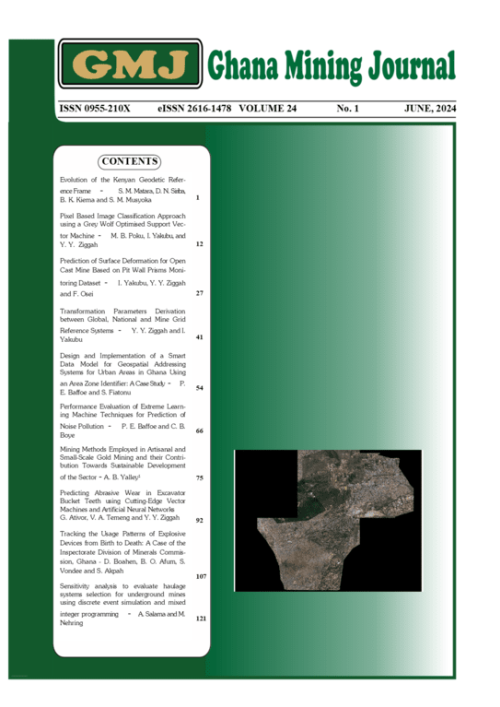Main Article Content
Transformation Parameters Derivation between Global, National and Mine Grid Reference Systems*
Abstract
In mining operations, coordinate transformation plays a key role in transforming coordinates acquired in the Global Navigation Satellite System (GNSS) into the national and local mine grid systems. It has often been known that most mining sites have transformation parameters determined using only a few common points or the minimum co-located points. However, these determined parameters only fit within a limited extent of the mine concession. Hence, allowing for extrapolation and incorrect transformation results when the existing transformation parameters are utilised beyond the existing co-located points. As the mine expands beyond it operationalised zones, there is the need to redefine a new set of transformation parameters that are devoid of extrapolation and apply to a wider coverage of the mine concession. This study applied, evaluated, and compared the Two-dimensional (2D) conformal similarity model and 2D affine model to facilitate the transformation of the Local Mine Grid (LMG) coordinates to the Ghana National Projected Grid (GNG), Universal Transverse Mercator (UTM), and vice versa. To guarantee the consistency of the transformation results between the models tested on all the grid systems, similar transformation performance was revealed. In transforming between GNG and LMG, the 2D conformal results vary from the 2D Affine by 0.0079 m, -0.0128 m, 0.0079 m and 0.0261 m in RMSEHPE, SDHPE, MaxHPE, and MinHPE. Similar observation was made for transforming between UTM and LMG, and UTM and GNG, respectively. Based on the results obtained it can be stated that the two models are applicable in connecting mine grid system into a national grid system (non-geocentric), and UTM.






